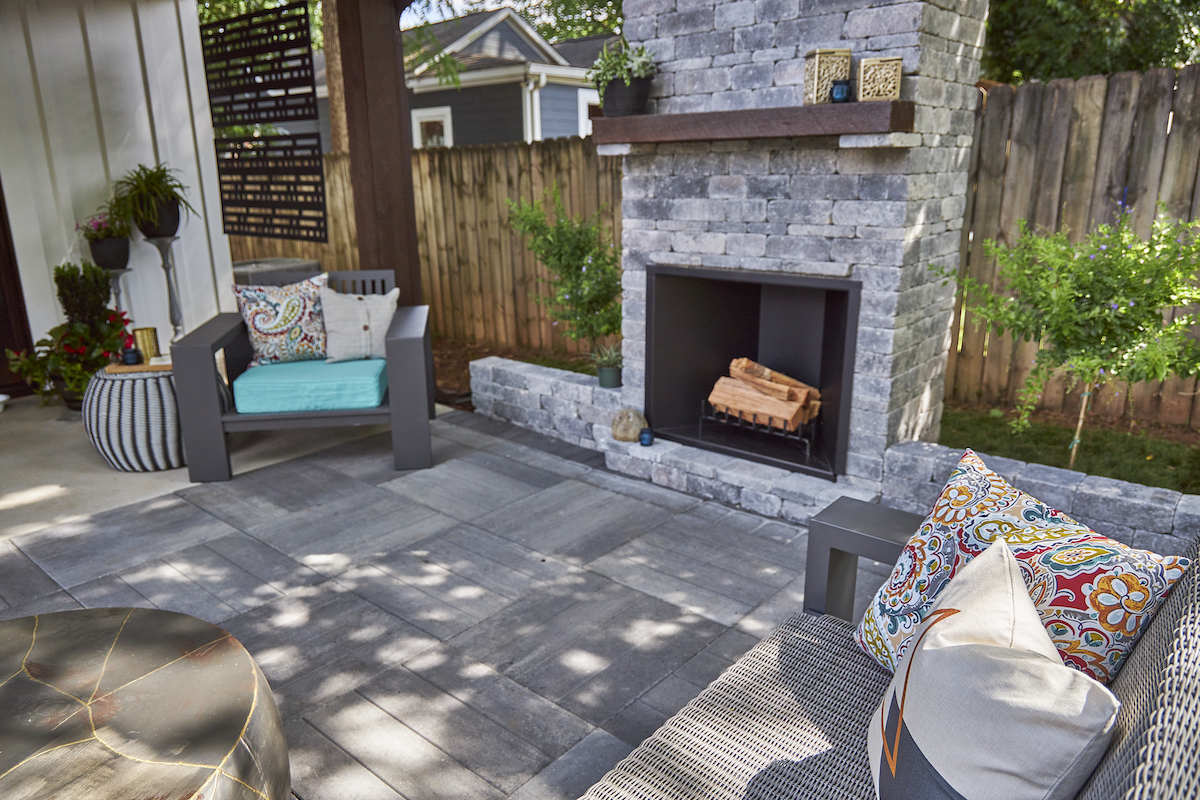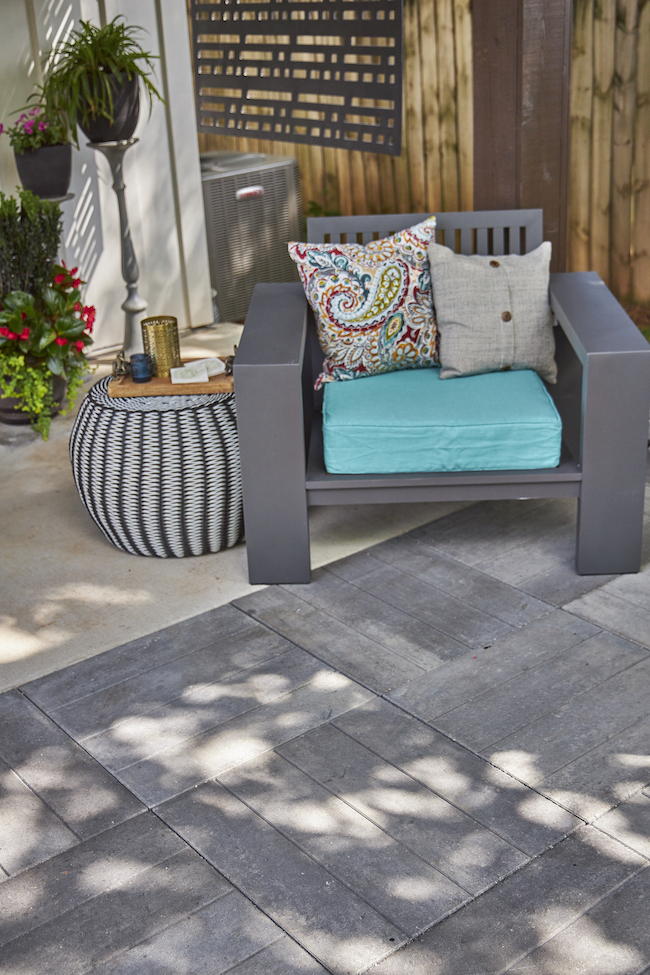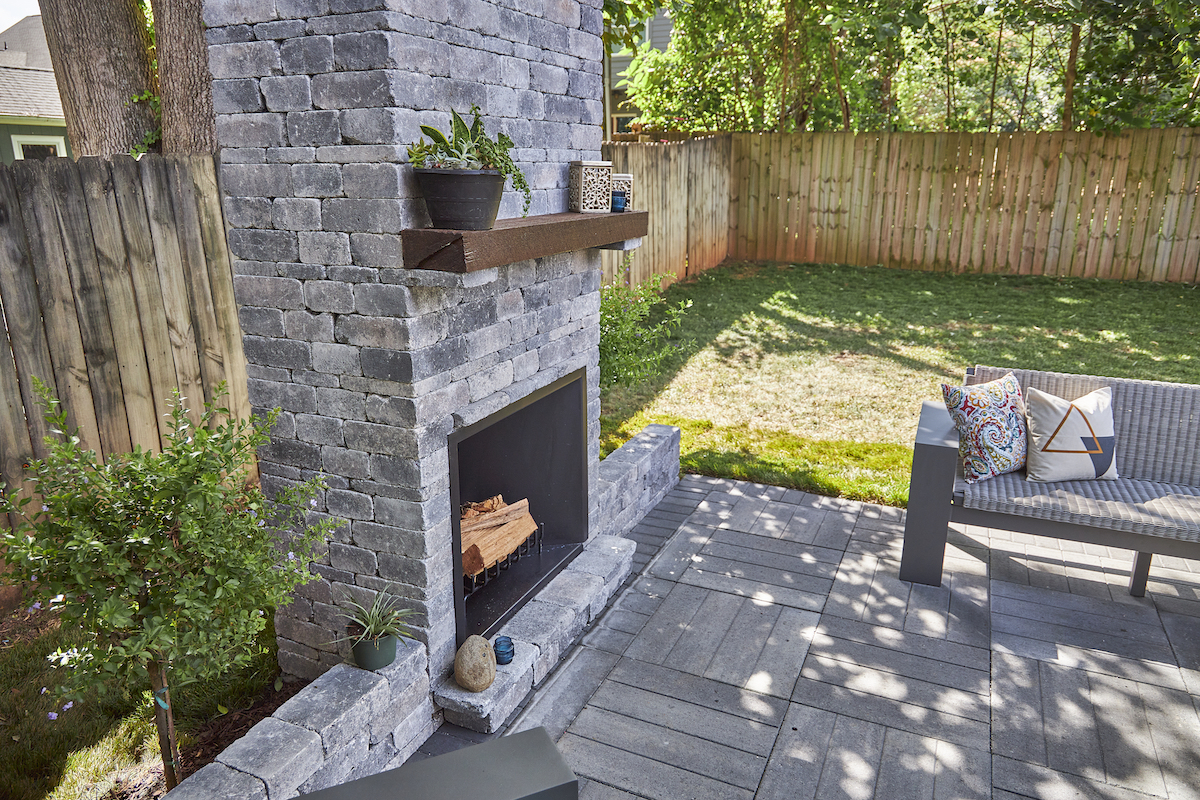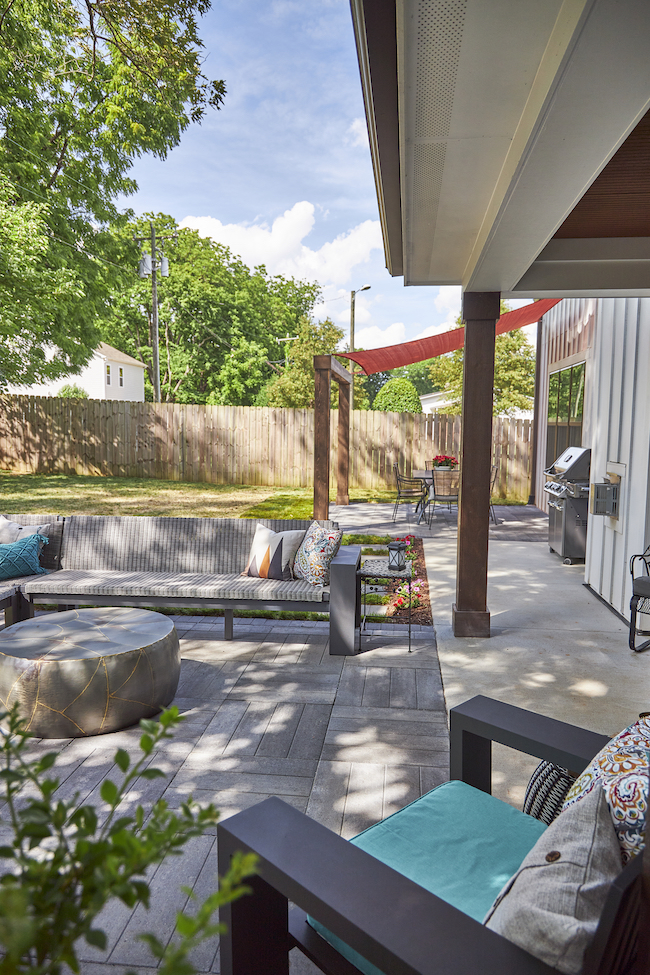

We may earn revenue from the products available on this page and participate in affiliate programs. Learn More ›
For many of us, the first day of autumn—or even Labor Day—signals the end of “hanging-out-outside” season. But it doesn’t have to! With a little creativity, homeowners can make use of their decks and patios long after summer is over.
On a typical fall day, when the weather is brisk and we’re reaching for our sweatshirts, our inclination is to head indoors, curl up in cozy blankets, sit with a hot drink, and indulge in creature comforts. But who’s to say that we can’t do all of this outside? Rather than saying goodbye to patio season, why not find a way to make our favorite summer hangout space into an autumn or winter gathering hub?
With a little elbow grease and craftiness, it’s easy to bring the Danish idea of hygge to your outdoor space. Hygge is about cultivating a warm atmosphere, spending time with your favorite people, and enjoying the good things in life. Here are some projects to help bring hygge to the outdoor areas of your home.
1. Pave a Place to Gather

No matter the weather, gathering outside is infinitely more pleasant when there is a mud-free, level patio area to situate tables, chairs, and outdoor accoutrements. For homeowners with some DIY know-how, laying a paver patio is within reach—in terms of both skill level and budget.
The first step to laying a patio is to take stock of your property: Use stakes and line to outline the ideal location, shape, and size of a patio. Once the position of the outdoor gathering place has been determined, it’s time to select the pavers.
The centerpiece of a great outdoor gathering hub is stunning, sturdy outdoor flooring. Pavestone’s Avant Patio Stones are made from durable concrete. They feature a contemporary, linear design in a simple, random pattern that gives any outdoor space a sleek, modern vibe.
Once you’ve selected the color and finish that suits your space, get to work preparing the ground. Measure the height of the gravel, sand, and pavers you plan to use to determine how deeply you need to excavate. The recommendation is for 2 to 4 inches of compacted base gravel and 1½ inches of leveling sand. To keep water from pooling near the foundation, be sure to grade the area slightly away from your home: For every 4 to 8 feet, there should be a 1-inch slope downward. Next, spread an even base layer of crushed rock or gravel and compact it down. Next, use a 1½-inch PVC pipe as a guide to place an even layer of sand over the gravel.
Now it’s time to lay the pavers over the sand. The Avant Patio Stones can be arranged in any pattern you would like—straight across, interwoven, or even diagonally. It’s important to start at the center and work your way outward to ensure that cut pavers appear balanced along the edges of the patio. Use a rubber mallet to gently tamp down each paver so they are level. Once you’re happy with the layout, sweep fine-grain sand between them to lock the pavers in place.
Following these steps to the letter does take time and effort, but the more carefully you prepare and level the ground, the more likely your outdoor flooring will look great for years to come.
To maintain a new paved patio, sweep the surface every now and again to clear leaves and other debris. Add some outdoor lights and a patio heater to boost the ambiance of the outdoor space, and you’ll be partying outside through the new year!
2. Make Fire the Focus

Now that your outdoor flooring is in place, why not add a warm and cozy focal point? A fire pit or fireplace doesn’t just warm the outdoor space, helping extend patio season even longer. It also gives you a convenient spot to roast marshmallows with friends and family—all in the spirit of hygge.
What’s involved in building a fire pit, and what’s the best material from which to build it? RumbleStone building blocks suit many outdoor projects, including a DIY outdoor fireplace or fire pit, and come in a variety of shapes and sizes so you can build just the fire element you have in mind. If you want to gather around a wood-burning fire pit or cozy up in front of a fireplace but have no clear vision of what you want it to look like, Pavestone’s website is a terrific resource. It provides several step-by-step plans that show exactly how to assemble the RumbleStone blocks in the configuration that’s right for any space.
Before embarking on a fire-pit building project, it’s important to check with your local government or homeowners association. Some municipalities may restrict the size or fuel type of fire elements on residential properties.
Once you get the green light to proceed, choose a location for your outdoor fire pit or fireplace that is located away from the house and any potential fire hazards, like propane or gas tanks. Next, mark the size and shape of your fire fixture. A fireplace or fire pit can be installed on pavers, provided they are porous and fire-resistant.
The RumbleStone outdoor fire-pit kits have the completed size listed, making it easier to prepare the ground beforehand. Excavate at least 8 inches of dirt for a fire-pit ring, fill the area with compacted sand, and level it before laying the concrete blocks. For fire pits, bond the blocks together using Quikrete Construction Adhesive, but be sure to wait at least 2 days before lighting your first fire. Once the fire pit has reached full height, add approximately 4 inches of gravel on top of the sand inside the fire pit.
3. Incorporate Suitable Seating

As we’ve said, hygge is all about comfort—and there’s nothing comfortable about standing up outside for hours on end. An outdoor living space needs seating options so that there’s room for everyone who wants to prolong patio season. Outdoor seating enables people to curl up with a mug of tea around the fire pit or cuddle up with a special someone by an outdoor heater.
Every outdoor seating area is different, and sometimes ready-made outdoor furniture just doesn’t fit the bill—or doesn’t stand up to the beating that rain, wind, UV rays, and snow can give it. Using concrete material for outdoor seating is a smart choice because it withstands these harsh outdoor elements.
RumbleStone materials aren’t just for creating outdoor fireplaces, patios, edgers, and planters; these rustic-style blocks offer a natural look and feel and create bespoke brick seating for an outdoor space. Creative folks can craft their own seating options or find plans for bench-seating configurations on the Pavestone website.
The important thing to remember about crafting seating from concrete is that changing or moving it isn’t very easy to do. For this reason, you’ll want to choose your DIY seating location very carefully, especially if you have installed a fire pit or outdoor fireplace. A good rule of thumb is to allow a minimum of 5 feet in front of the fireplace for the sitting area, which will keep people warm but not too hot.
It’s best to install RumbleStone bench seating on a level foundation that can support the considerable extra weight of the bricks. A patio built with Pavestones, for example, can easily withstand this seating. The RumbleStone project building instructions outline step-by-step assembly of their popular designs. As you add new blocks, use construction adhesive between the layers to keep them secure.
This content has been brought to you by Pavestone. Its facts and opinions are those of BobVila.com.